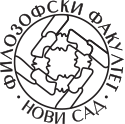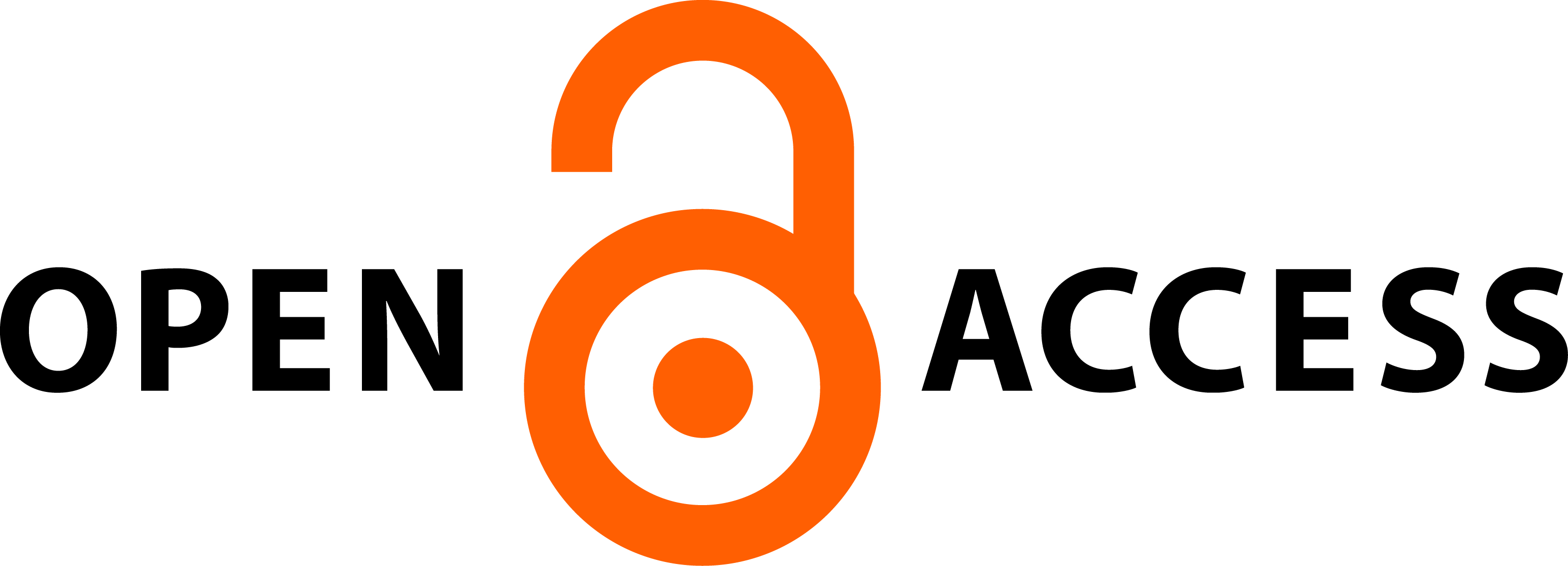LINGUISTIC LANDSCAPE RESEARCH AS ONE OF THE MOST ACTUAL RESEARCH AREAS OF APPLIED LINGUISTICS
Abstract
The linguistic landscape research from the 90s has raised an increasing interest in sociolinguistics. The definition of linguistic landscape derives from Landry and Bourhis. They used the term for the first time for signs in public places (commercial signs, inscriptions, place names, street signs, etc.). This paper reviews the theoretical and methodological basics of linguistic landscape research, focusing on recent researches, the most relevant approaches and key issues in the topic. In the last two decades linguistic landscape research has gathered speed and expanded. Since 2000, a number of research projects and studies have dealt with this subject from the perspective of applied linguistics, sociolinguistics or language policy – especially in bilingual and multilingual surroundings and situations –, and have shown increasing interest for signs and inscriptions in different places. The researches require an interdisciplinary approach and the involvement of different disciplines (education, economics, demography, geography, semiotics, etc.).
References
Backhaus, Peter. 2009. Rules and regulations in linguistic landscaping: A comparative perspective. In Linguistic landscape: Expanding the scenery, ed. Elana Shohamy–Durk Gorter. 157–172. New York–London: Routledge.
Barni, Monica. 2006. From statistical to geolinguistic data: Mapping and measuring linguistic diversity. Fondazione Eni Enrico Mattei Working Papers.
Barni, Monica–Carla Bagna. 2009. A mapping technique and the linguistic landscape. In Linguistic landscape: Expanding the scenery, ed. Elana Shohamy–Durk Gorter. 126–140. New York–London: Routledge.
Bartha Csilla–Laihonen, Petteri–Szabó Tamás Péter. 2013. Nyelvi tájkép kisebbségben és többségben. Egy új kutatási területről. Pro Minoritate 23 (3): 13–29.
Bátyi Szilvia. 2014. Hévíz: nyelvi tájkép orosz ecsettel. Alkalmazott Nyelvtudomány (XIV): 21–34.
Ben-Rafael, Eliezer–Shohamy, Elana–Muhammad H. Amara–Trumper-Hecht, Nira. 2004. Linguistic landscape and multiculturalism: A Jewish-Arab comparative study. Tel Aviv: Tel Aviv University.
Ben-Rafael, Eliezer–Shohamy, Elana et al. 2006. Linguistic landscape as symbolic construction of the public space: the case of Israel. International Journal of Multilingualism 3 (1): 7–30.
Calvet, Louis Jean. 1990. Des mots sur les murs: Une comparaison entre Paris et Dakar. In Des langues et des villes (Actes du colloque international a` Dakar, du 1564. International Journal of Multilingualism au 17 de´cembre 1990. Agence de coope´ration culturelle et technique, ed. R. Chaudenson. 73–83. Paris.
Cenoz, Jasone–Durk Gorter. 2006. Linguistic landscape and minority languages. In Linguistic Landscape: A New Approach to Multilingualism, ed. Durk Gorter. 67–80. Clevedon: Multilingual Matters.
Conseil de la langue française. 2000. La langue de l’affichage à Montréal de 1997 à 1999. Québec.
Coulmas, Florian. 2009. Linguistic landscaping and the seed of the public sphere. In Linguistic landscape: Expanding the scenery, ed. Elana Shohamy–Durk Gorter. 13–24. New York–London: Routledge.
Csernicskó István. 2015. Nyelvek vetélkedése a nyelvi tájképben: kárpátaljai példa. Alkalmazott Nyelvtudomány, (XV): 75–84. https://core.ac.uk/download/pdf/42941447.pdf (2016. jún. 2.)
Dailey, René M.–Giles, Howard–Jansma, Laura L. 2005. Language attitudes in an Anglo-Hispanic context: The role of the linguistic landscape. Language – Communication 25 (1): 27–38.
Edelman, Loulou. 2010. Linguistic Landscapes in Netherlands. Amsterdam: Amsterdam Center for Language and Communication.
El-yasin, Mohammed K.–Radwan S. Mahadin. 1996. On the pragmatics of shop signs in Jordan. Journal of Pragmatics 26 (3): 407–416.
Gorter, Durk. 2006. Further possibilities for linguistic landscape research. In Linguistic landscape: A new approach to multilingualism, ed. Durk Gorter. 81–89. Clevedon [etc.]: Multilingual Matters.
Huebner, Tom. 2006. Bangkok’s Linguistic Landscapes: Environmental Print, Codemixing and Language Change. International Journal of Multilingualism 3 (1): 30–51.
Itagi, Narasimha Hariyacharya–Singh, Shailendra Kumar eds. 2002. Linguistic Landscaping in India with Particular Reference to the New States: Proceedings of a Seminar. Mysore: Central Institute of Indian Languages and Mahatma Gandhi International Hindi University.
Jaworski, Adam–Crispin Thurlow. 2010. Introducing Semiotic Landscapes. In Semiotic Landscapes: Language, Image, Space, ed. Jaworski, Adam–Crispin, Thurlow. 1–40. London: Continuum.
Laihonen, Petteri. 2012. Nyelvi tájkép egy csallóközi és egy mátyusföldi faluban. Fórum Társadalomtudományi Szemle (3): 27–50.
Laihonen, Petteri–Tódor Erika. 2015. The changing schoolscape in a Szekler village in Romania: signs of diversity in rehungarization. International Journal of Bilingual Education and Bilingualism http://dx.doi.org/10.1080/13670050.2015.1051943, Routledge: Taylor & Francis.
Landry, Rodrigue–Richard Bourhis. 1997. Linguistic landscape and ethnolinguistic vitality. Journal of Language and Social Psychology (16): 23–49.
Leclerc, Jacques. 1989. La guerre des langues dans l’affichage. Montreal: VLB éditeur.
Lulić Emil. 2013. Újvidék sétálóutcájának nyelvi tájképe. In Változó világ – változó közösségek a Kárpát-medencében. Határhelyzetek VI., szerk. Fedinec Csilla–Szoták Szilvia. 177–199. Budapest: Balassi Intézet Márton Áron Szakkollégium.
Nádor Orsolya. 2014. Nyelvideológiák az egy-, két- és többnyelvűség hátterében. In Sokszínű nyelvészet–nyelvi sokszínűség a 21. század elején. Írások Kolláth Anna tiszteletére, szerk. Gróf Annamária–N. Császi Ildikó–Szoták Szilvia. 260–265. Budapest–Alsóőr: Tinta Könyvkiadó–UMIZ–Imre Samu Nyelvi Intézet.
Reh, Mechthild. 2004. Multilingual writing: A reader-oriented typology–with examples from Lira Municipality (Uganda). International Journal of the Sociology of Language (170): 1–41.
Rosenbaum, Yehudit–Elizabeth Nadel–Robert L. Cooper–Joshua A. Fishman. 1977. English on Keren Kayemet Street. In The spread of English: The sociology of English as an additional language, ed. Joshua A. Fishman, Robert L. Cooper–Andrew W. Conrad. 179–194. Rowley, MA: Newbury House.
Satinská, Lucia. 2014. Jazyková krajina Bratislavy: Dunajská ulica. Linguistic Landscape of Bratislava: Dunajská street. In Polarity, paralely a prieniky jazykovej komunikácie: zborník príspevkov z 8. medzinárodnej vedeckej konferencie o komunikácii konanej 6–7. 9. 2012 v Banskej Bystrici, ed. Patráš, V. 157–167. Banská Bystrica: Belianum.
Scollon, Ron–Scollon, Susanne Wong. 2003. Discourses in Place: Language in the Material World. London–New York: Routledge.
Sebba, Mark. 2007 Multilingualism, multimodality and mixed-language texts. Paper presented at the 6th International Symposium on Bilingualism, Hamburg.
Shohamy, Elana–Waksman, Shoshi. 2009. Linguistic landscape as an ecological arena: Modalities, meanings, negotiations, education. In Linguistic landscape:Expanding the scenery, ed. Elana Shohamy–Durk Gorter. 313–331. New York–London: Routledge.
Szabó Tamás Péter. 2015. The Management of Diversity in Schoolscapes: an analysis of Hungarian practices. Apples – Journal of Applied Language Studies (1): 23–51.
Szoták Szilvia. 2013. Nyelvi tájképek az Őrvidéken. In A közép-európaiság dicsérete és kritikája, szerk. Fedinec Csilla–Ilyés Zoltán–Simon Attila–Vizi Balázs. 515–538. Pozsony: Kalligram Kiadó.
Szoták Szilvia. 2016. Magyar nyelv és magyar népcsoport Burgenlandban: Nyelvi tájképek vizsgálata a többnyelvűség kontextusában. Doktori értekezés, kézirat, Pécs: PTE, Nyelvtudományi Doktori Iskola.
Tódor Erika. 2014. Hogyan hívogat az iskola? Vizuális nyelvhasználat az iskolában. Magiszter 40–51. http://rmpsz.ro/uploaded/tiny/files/magiszter/2014/tel/08todornyelv
hasznalat40_51.pdf (2017. dec. 20.)
Tódor Erika Mária. 2015. Kié az iskola? Nyelvi tájkép és nyelvhasználati szokások erdélyi magyar tannyelvű iskolákban. In Többnyelvűség és kommunikáció Kelet-Közép-Európában, szerk. Benő Attila–Fazakas Emese–Zsemlyei Borbála. 256–266. XXIV. Magyar Alkalmazott Nyelvészeti Kongresszus előadásai, MANYE vol. 11. Kolozsvár: Erdélyi Múzeum-Egyesület.








